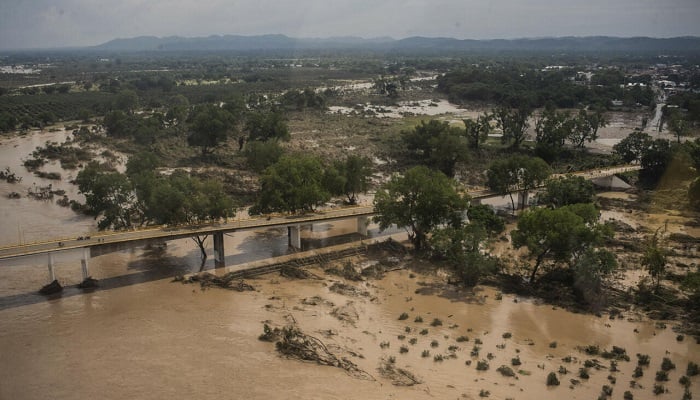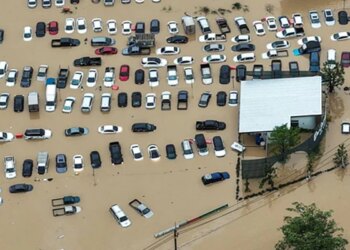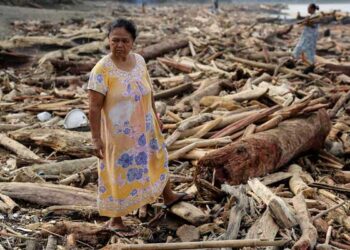Select Language:
Floodwaters submerge open fields scattered with trees across Veracruz, one of the most affected regions after several days of heavy rainfall and severe flooding. —AFP
– Small towns remain isolated; residents are clearing roads to enable aid delivery.
– Emergency shelters have been opened for those displaced, with helicopters ferrying food and water to stranded communities.
– Intense rains have caused landslides, destroying entire neighborhoods and washing away infrastructure.
Rescue teams are working tirelessly Monday to reach individuals trapped by the catastrophic floods that have resulted in 64 deaths in central and eastern Mexico, with 65 people missing. Heavy rains over last week transformed streets into raging rivers, triggered landslides, and washed out roads and bridges.
Many small communities are still cut off by road, days after the storms, with residents making great efforts to clear pathways for supplies. President Claudia Sheinbaum announced Monday that about 10,000 military personnel equipped with boats, aircraft, and helicopters are involved in rescue and relief operations, providing critical food and water supplies to those affected.
Shelters are in place for displaced residents, and aerial flights continue to deliver essentials to those cut off. “Multiple flights are necessary to get enough food and water to everyone,” the president stated.
Laura Velázquez, head of Mexico’s Civil Defense, reported that Veracruz, Hidalgo, and Puebla were the hardest hit by the flooding caused by relentless heavy rains. In Hidalgo alone, 43 individuals remain missing, and the death toll was updated from 47 to a higher number within just 12 hours, underscoring the rapidly evolving scale of the crisis.
This year has seen particularly intense rainfall in Mexico, including a record amount for Mexico City.
Residents in Tenango de Doria, Hidalgo, walked kilometers in search of food and water as flooded roads and inaccessible terrain hinder transportation. Many carried belongings, hoping to find shelter. Marco Mendoza, a 35-year-old farmer, shared, “We walked two and a half hours through the mud… Everything is ruined; we have no supplies or food.” Stores in the town center lacked electricity, and locals gathered in the main plaza, seeking updates on road openings and aid arrivals.
Farmer Francisco Hernandez from nearby El Texme explained that a river overflowing its banks has left his community “trapped.” Although Mexico’s rainy season typically occurs from May to October, last week’s downpour was exacerbated by a tropical system moving from the Gulf of Mexico combined with a cold front from the north, meteorologists said.
Due to rising waters, coastal cities and towns in Veracruz, rich with numerous rivers, were advised to evacuate last Friday. In some elevated areas, persistent rains caused landslides, sweeping away parts of mountainsides.
Sheinbaum dismissed questions regarding early warnings and preparedness, noting that such events are challenging to predict with precision unlike hurricanes. “It was difficult to have advance notice about this situation because of the unpredictable nature of the weather,” she explained.
Many areas began clearing debris with heavy machinery on Sunday as skies cleared.






